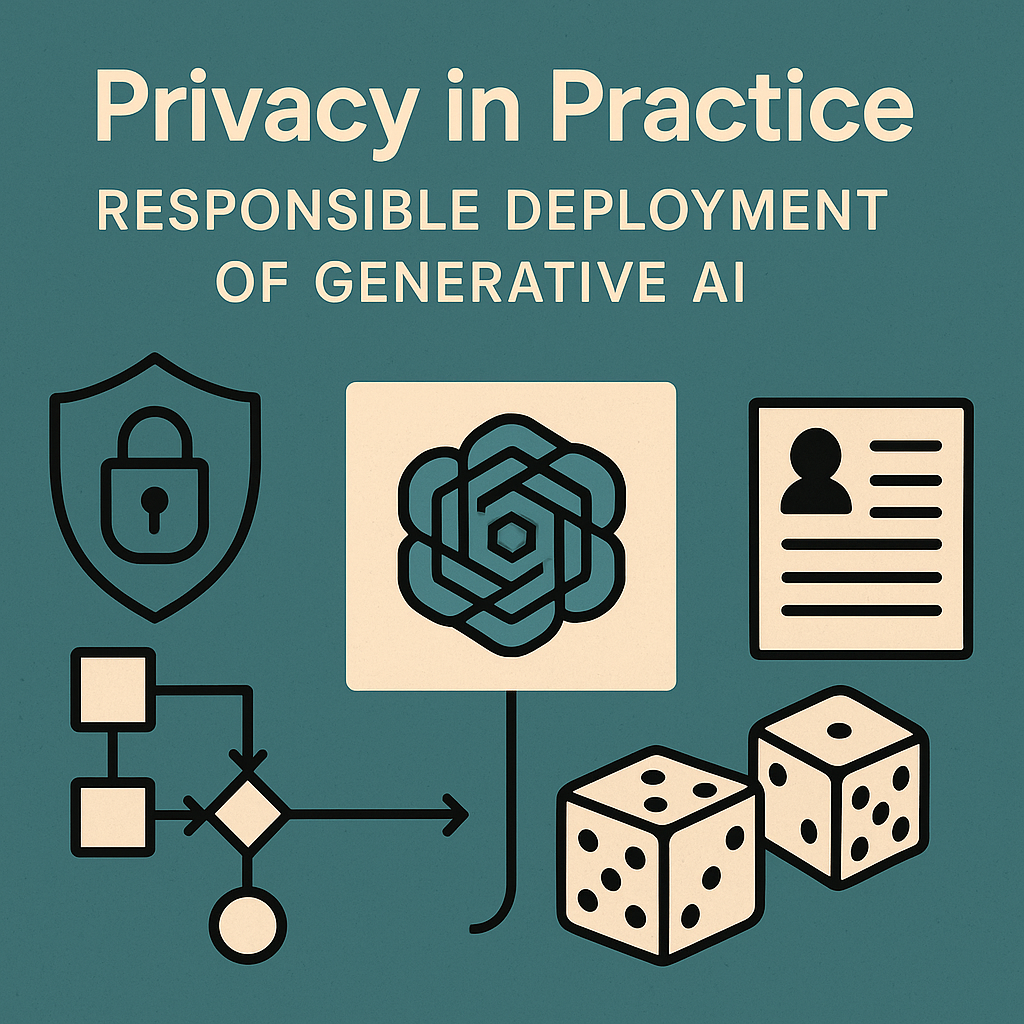Privacy in Practice: Responsible Deployment of Generative AI

Introduction
Industrial adoption of artificial intelligence is booming. According to market research, the industrial AI market reached $43.6 billion in 2024 and is projected to grow to $153.9 billion by 2030 at a compound annual growth rate (CAGR) of 23 % (Industrial AI market: 10 insights on how AI is transforming …). A major driver of this growth is the rise of generative AI systems that can produce text, images and code. As organizations look to harness generative AI for automation, product development and decision support, they also face a new set of challenges around privacy and responsible deployment.
The earlier posts on this blog have covered deterministic large-language-model systems, agentic workflows and automation. In this article, we’ll extend that conversation to discuss why privacy must be a first-class concern in generative-AI projects and how practitioners can implement safeguards without stifling innovation.
Why Privacy Matters in Generative AI
Generative models are trained on vast datasets, often scraped from public web pages or sourced from user interactions. When deployed naively, these systems can inadvertently leak sensitive information, replicate biases, or be used to generate disinformation. Regulations such as the EU’s GDPR, California’s CCPA/CPRA, and emerging AI-specific laws place strict requirements on how data is collected, processed and used.
Beyond compliance, protecting privacy is key to building trust with customers and partners. If a generative chatbot hallucinates personal information or reveals training data that should have been confidential, the reputational damage can outweigh any short-term productivity gains. Responsible deployment means ensuring that models and the infrastructure around them respect user consent, minimize data retention, and provide transparent control over outputs.
Common Privacy Risks
- Training data leakage: Models may memorize portions of their training data. Without proper safeguards, a prompt can elicit sensitive snippets (e.g., names, addresses, internal documents) from the model.
- Unintended re-identification: Even if training data is anonymized, the combination of outputs with external data sources can re identify individuals.
- Prompt injection and data exfiltration: Malicious prompts can cause a model to reveal secrets or perform actions beyond its intended scope.
- Model abuse: Generative AI can be misused to create phishing emails, deepfakes or realistic disinformation campaigns.
Understanding these risks is the first step towards mitigating them.
Strategies for Responsible Deployment
- Data minimization and consent: Collect only the data necessary to accomplish the task and ensure that individuals understand how their data will be used. Employ techniques like differential privacy or synthetic data generation during training to reduce the chance of memorization.
- Retrieval-augmented generation (RAG) with redaction: Pair your models with secure knowledge bases and implement redaction or classification filters that remove sensitive information before it reaches the LLM.
- Output filtering: Use post generation classifiers and rules to scan model outputs for PII or disallowed content, blocking or rewriting responses that contain sensitive data.
- Fine-tuning & alignment: Fine‟tune your models on curated datasets that reinforce privacy”preserving behaviors and align them with company policies and industry regulations.
- Audit & monitoring: Log prompts and outputs (with consent) and implement red‟teams to probe for leakage, bias and misuse. Regularly audit third”party models and services.
- Stay current with regulation: The regulatory landscape is evolving quickly. Assign compliance owners to monitor legal developments (e.g., the EU’s AI Act, NIST AI Risk Management Framework) and update model governance policies accordingly.
Conclusion
Generative AI holds enormous promise, but responsible deployment requires a thoughtful approach to privacy and safety. By understanding the risks and implementing safeguards throughout the model lifecycle — from data collection and training to inference and monitoring — organizations can innovate confidently while maintaining trust with users, regulators and society at large.